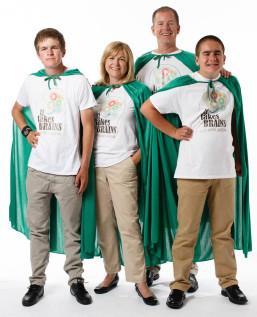 Blog written by Cindy Everson
Blog written by Cindy Everson
I remember vividly our drive to the neurologist with our 12-month-old son, Shane, in the back seat. We had been referred by his pediatrician due to the fact that he was not walking or crawling yet. As we approached the office my husband said, “It’s going to be fine.” Well, it wasn’t. With careful monitoring, about 18 months later, he was formally diagnosed with autism. Our second son, Joe, was diagnosed with autism at 20 months.
Our life became filled with behaviorists, in-home therapists, speech therapists, occupational therapists, neurologists, special education and much, much more. The days were hectic but the real challenge was dealing with and managing the obsessive behaviors and meltdowns that often happened. At times we felt very isolated from the rest of the world. Our kids could not participate in the activities most kids did, T-ball games, birthday parties, sleepovers. Even a simple meal at a restaurant was too difficult for them and us.
Shane and Joe are now 19 and 16 and enjoying a happy and healthy life. They participate in Special Olympics, love Disneyland and riding on our ATVs with their dad. Our oldest loves trains and our youngest loves asking people he meets about the cars they have owned! Our life is not without challenges and struggles and we continue to rely on our faith, family and friends for strength and support. It is often difficult for us as parents to know that there is much our children will not experience. Our life is still very different than those around us, as now our friends’ children are going to college, graduating from college, getting married and having children.
We were inspired to start a nonprofit organization called P.A.R. 4 Kid’s Sake in 2002, which raised over $1 million for autism research and local services. Now, we are inspired to make a difference by registering with the Autism BrainNet. This is a program that collects post-mortem brain tissue from people affected by autism. This resource is essential to help scientists understand the amazing brains of people with autism. For example, researchers just discovered that the number of traffic directing cells called “interneurons” that help connect different cell types are reduced in autism. This could explain why some people with autism, like my son Shane, sometimes feels overwhelmed with information. Also, there are differences in cell numbers in the area of the brain called the amygdala. This area is involved with brain circuits that control fear and anxiety, and future interventions that target this difference could help these behaviors and improve social interaction. Without knowing about the brains of people with autism, scientists will never understand the brains of people with autism.
We feel confident that someday these efforts will bring answers and we would love nothing better than to have our children be able to contribute and be a part of this. We encourage you to sign up to learn more by clicking here. There is no obligation be a donor, but you will receive updates and a newsletter with valuable information for families.
With gratitude,
Cindy Everson
Like the Autism BrainNet on Facebook, and follow along with us on Twitter.
